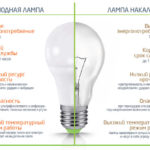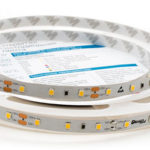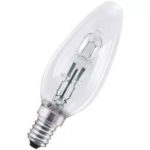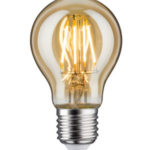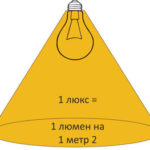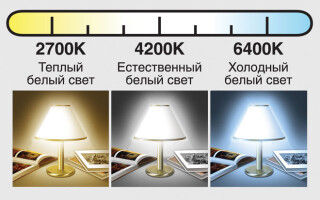The color temperature of LED lamps is one of the main values that characterizes lighting technology. It must be taken into account both when designing a room and when choosing car lamps. Color temperature is a broad concept that includes such characteristics as spectrum properties, emission color, color transfer index, etc.
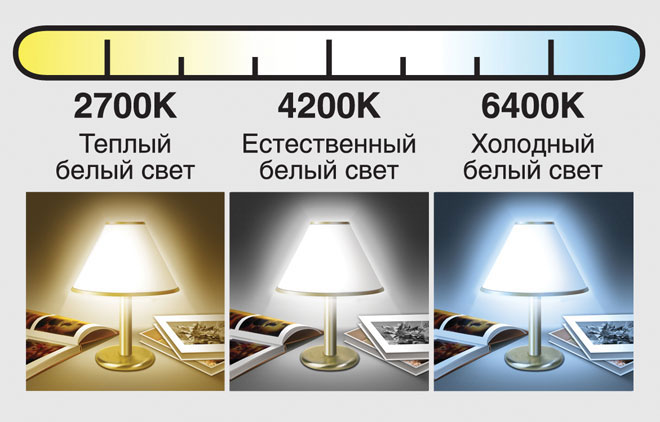
Content
Physical interpretation of color temperature
The temperature of light was described by physicist Max Planck. These treatises presented the laws of distribution of energy. As a result, the concept of color temperature appeared. The unit of measure was the kelvin. Based on the formula, this coefficient is equal to the temperature of an absolute black body, which emits light on a measurable scale of colors.

The measurement of such a temperature in fluorescent lamps occurs by comparing them with an absolute black body.This is a solid physical body that absorbs electromagnetic radiation incident on it at different temperatures in all latitudes. When the coefficient changes, the radiation parameters also change. So, neutral light is located in the middle of the Kelvin scale.
Bodies with different chemical composition and physical properties, when heated to the required temperature, produce different radiation. In this regard, the term "correlated color temperature" is used. It is equal to the hue temperature of an absolute black body, which is identical in color to the light source in question. The composition of the radiation and the physical temperature are different.
Color temperature correlation
As the temperature rises, heating occurs. If the lamp is in a hot state, the colors on the color temperature scale begin to change alternately. Simple incandescent lamps have a color temperature of 2700 K, while their glow and degrees are located in the warm range of the spectrum. The temperature of LED lamps does not indicate the level of their heating: at an indicator of 2700 K, the lamp heats up to + 80 ° С.
The color rendering index CRI (Ra), also called the color rendering index, is a value that characterizes the degree to which the natural color of an object matches its visible color when illuminated by a given light source. The need to introduce this parameter is due to the fact that 2 different types of lamps can have the same color temperature, while transmitting shades in different ways.
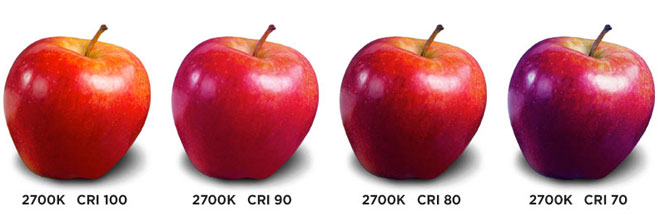
Perception of colors
The color perception of each individual has its own characteristics.Color perception is the effect of the refraction of light waves received by the optic nerve and processed by the brain's visual center. Each person has their own perception of shades. The older a person becomes, the more his color perception is distorted. Features of the psyche of the individual also affect his color perception.
The perception of a particular color can be distorted by solar radiation. The warmth of light is also characterized by individual perception and depends on the characteristics of the organism and the state of the person at the time of perception.
light colors
It is not difficult to determine a cold object from which no radiation is emitted. The main parameters of light reflection from such an object are such indicators as wavelength and frequency. Another situation occurs with a heated body emitting light. The heat of light will directly depend on the type of radiation. This can be seen in the example of a tungsten filament in a simple incandescent lamp. The sequence of actions is as follows:
- The light turns on, electricity is supplied to the terminals.
- There is a gradual decrease in the level of resistance.
- A black body emits red light.
According to accepted standards, there are 3 types of light colors:
- warm white light;
- neutral (natural day);
- cold white light.
Color temperature and shades
The beginning of the visible range of ray emission reaches the level of 1200 K. In this case, the glow has a reddish tint. With further incandescence, a change in color gamut begins to occur. At 2000 K, red changes to orange and then turns to yellow, reaching a level of 3000 K. For tungsten coils, the highest mark is 3500 K.
LED lamps are capable of heating up to 5500 K and above.At 5500 K they emit bright white light, at 6000 K they are bluish, at 18000 K they are magenta.
Temperature affects color perception. The coefficients of different color gamuts vary significantly.
The Kelvin table, or color temperature table, shows the gradation of colors and shades and gives a clear description of their application.
| Color temperature | Color | Description |
| 2700 K | Warm white, red white | Predominant in simple incandescent lamps. Brings warmth and comfort to the interior. |
| 3000 K | Warm white, yellowish white | Inherent in most halogen lamps. It has a colder shade than the previous color. |
| 3500 K | White | Characteristic lighting for fluorescent tubes of different widths. |
| 4000 K | Cold white | Most often used in high-tech style. |
| 5000-6000K | natural daytime | Simulates daylight. It is applied in winter gardens and terrariums. |
| 6500 K | cold daytime | Widely used in photography and cinematography. |
To choose the right lighting, you should take into account its purpose. When choosing the optimal lighting, you need to remember that its temperature and brightness will be different depending on whether it is daytime, evening or night.
LED lightening
The LED lamp is one of the most popular types of lighting fixtures.
The color temperature of LED incandescent lamps is represented by the following shades:
- warm white (Warm White) - up to 3300 K;
- natural white (Natural White) - up to 5000 K;
- cold white (Cold White or Cool White) - more than 5000 K.
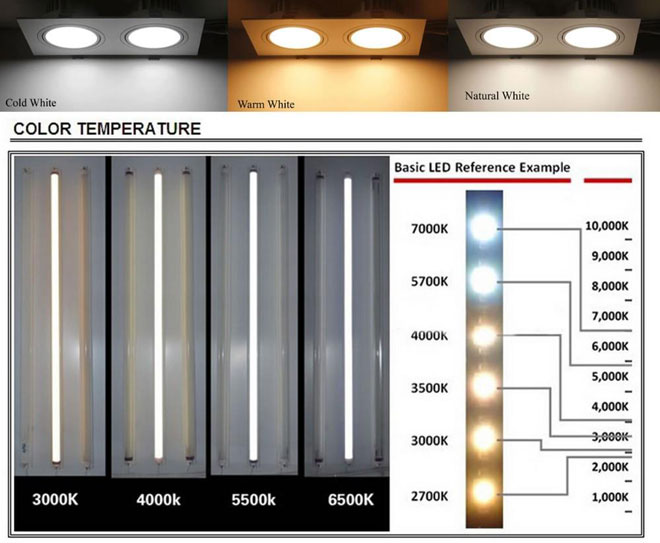
The temperature characteristics of diodes are a determining factor in choosing the scope of their application.They are used for street lighting, billboard lighting and vehicle lighting equipment.
The advantages of cold light include contrast, due to which it is widely used in lighting dark areas. Such LED lamps can spread light over long distances, so they are often used in road lighting.
LEDs that emit a warm glow are mainly used to illuminate small areas. The luminous flux of warm and neutral tones creates the desired effect in cloudy and rainy weather. Precipitation influences the emission of cold light, while warm light does not suffer any significant distortion in rainy or snowy weather.
The peculiarity of the warm glow of LED lamps is that they allow you to clearly see both the illuminated object and the surrounding area. Due to this specificity, warm gamma is effectively used in underwater lighting.
The color rendition of LED lamps has its own characteristics: cold shades of the glow incorrectly convey the colors of the surrounding things. Such light creates sharpness and brightness, which negatively affects vision. The warm color of the glow has a more beneficial effect on the eyes.
The glow of energy-saving lamps is characterized by warm colors. They are close to natural light sources, so they are good to use to illuminate homes.
xenon lighting
Xenon lamps differ from each other in technical characteristics, on which the color temperature depends.In the production of fog lamps, only a warm yellow glow is used. White-yellow light is characterized by enhanced light output, does not create eye strain, it is clearly visible on wet pavement. Its advantage is that it does not blind drivers of oncoming cars with its light.

The standard white color is the most eye-friendly. Due to its properties, it is applicable in many areas.
White color is characterized by the fact that its saturation varies depending on the type of optical device. Such lighting equipment gives the worst lighting performance in precipitation and fog, however, in sunny or snowy weather, it is indispensable.
Blue and blue-violet colors are used for decorative purposes, as they have low radiant characteristics.
In Europe, studies have been conducted, according to which many car owners prefer xenon headlights that simulate daylight close to noon.
Lighting features must be considered in their totality. The color temperature has indicators of brightness and contrast, which is reflected in the degree of comfort in the perception of light.
Depending on the tasks assigned, preference is given to cold, warm or neutral lighting. Each of these types of lighting produces a different effect and influence on the perception and mood of a person. All these nuances must be taken into account when choosing lighting equipment.
Similar articles:
